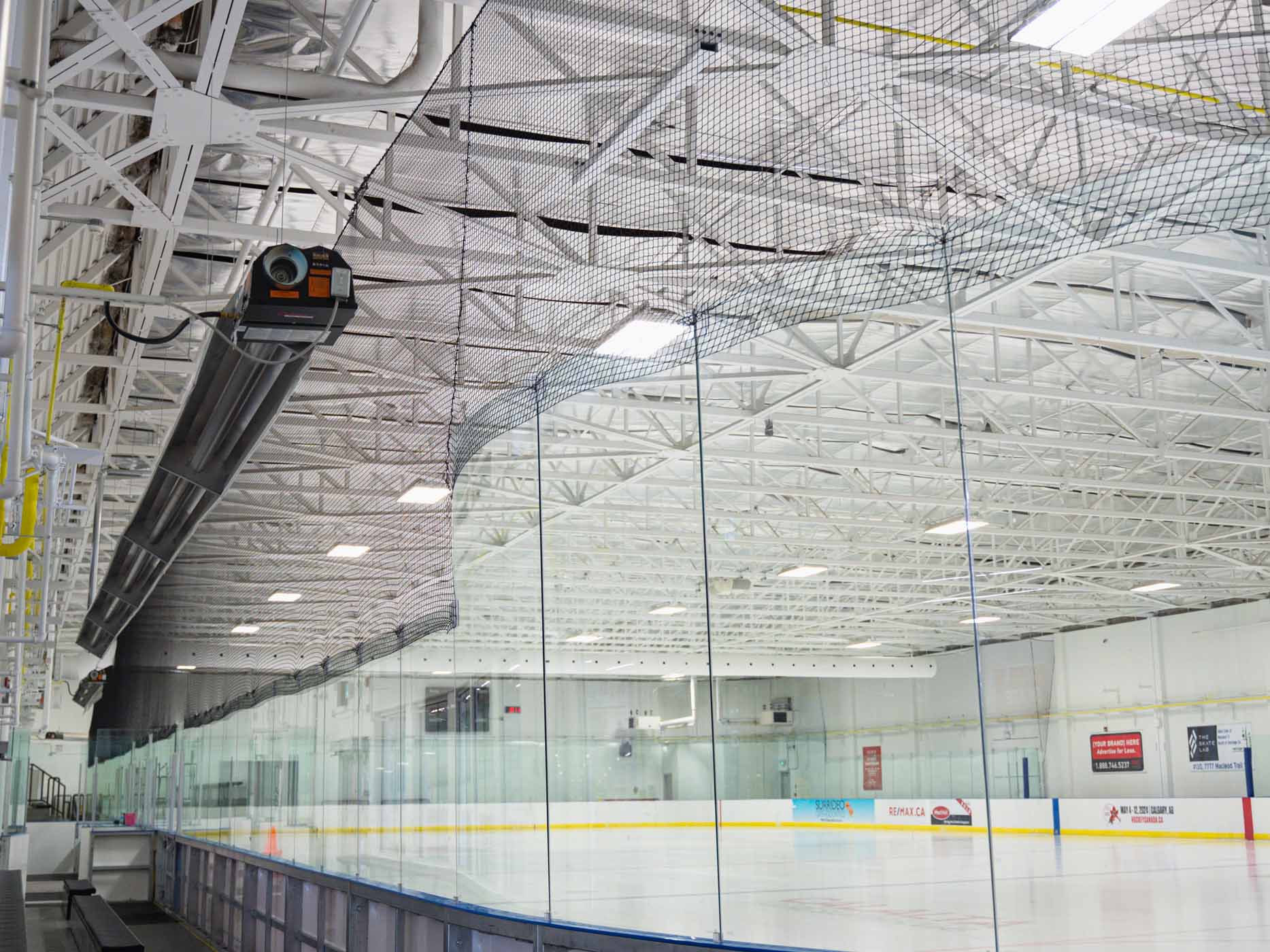When investing in outdoor comfort, especially in colder climates, one of the first questions many homeowners, business owners, and facility managers ask is: “How long do infrared heaters last?”
It’s a fair question. After all, a patio heater or commercial infrared heating system isn’t just a short-term purchase, it’s an investment in comfort, efficiency, and long-term value. Understanding durability, longevity, and maintenance needs can help you choose the right system, avoid costly replacements, and make the most of your investment.
How Long Do Infrared Heaters Last? Durability, Longevity & Maintenance Explained
In this comprehensive guide, we’ll explore the expected lifespan of infrared heaters, the factors that influence how long they last, what maintenance is (and isn’t) required, and how brands like Calcana design heaters for long-term durability.
Before we dive into durability, it’s important to understand how infrared heaters work.
Unlike traditional forced-air or convection heaters that warm the surrounding air, infrared heaters emit radiant heat, the same type of warmth you feel from the sun on your skin. Instead of heating the air, they warm people, objects, and surfaces directly. This makes them extremely efficient outdoors and in drafty spaces where heated air would otherwise be lost.
There are three main categories of infrared heating systems:
-
Short-wave (near-infrared): Burns very hot, provides instant heat, but often produces bright visible light.
-
Medium-wave: Balances surface penetration and comfort, often used in industrial or semi-outdoor spaces.
-
Long-wave (far-infrared): The gentlest and most natural form of radiant heat, ideal for patios, restaurants, and commercial spaces.
Infrared heating systems can be powered by electricity, natural gas, or propane, and their design impacts how long they’ll last. For example, low-maintenance, corrosion-resistant stainless steel heaters last significantly longer than lightweight electric units with fragile quartz bulbs.
Typical Lifespan of Infrared Heaters
Infrared heaters are known for their durability, which makes them a popular choice for both residential and commercial applications. On average, a well-manufactured infrared heater can last anywhere from 15 to 20 years when properly installed and maintained. Some heavy-duty commercial or industrial models, such as those used in restaurants, arenas, or outdoor venues, can last even longer, often exceeding 25 years of reliable service.
The longevity of infrared heaters is tied directly to their design. Unlike forced-air heaters or traditional furnaces that rely on fans, infrared heaters operate on a much simpler principle: they emit radiant energy to warm surfaces, objects, and people directly. With fewer moving parts, there is less wear and tear, which naturally extends the heater’s operational life.
However, lifespan is also influenced by factors such as:
-
Quality of materials – Stainless steel or marine-grade construction resists rust and corrosion, allowing the heater to withstand outdoor conditions.
-
Usage patterns – A heater that runs daily in a restaurant patio will age differently than one used occasionally in a private garage.
-
Environmental exposure – Coastal areas with high humidity or industrial sites with dust and debris may require more frequent checks.
-
Maintenance practices – Proactive care, such as cleaning reflectors or checking gas lines, ensures maximum performance over time.
For businesses or homeowners investing in infrared technology, the long-term value is clear. Instead of replacing units every 2–5 years (common with cheaper portable heaters or electric space heaters), quality infrared systems are designed to deliver comfort season after season without frequent replacement costs.
Factors That Influence Longevity
Several variables play a role in determining how long an infrared heater will last. While construction quality is the foundation, external factors can either extend or shorten its usable life:
-
Build Quality & Engineering
High-quality heaters from trusted manufacturers (like Calcana) are engineered with durability in mind. The use of premium components such as stainless steel burners, robust wiring, and corrosion-resistant housings significantly increases lifespan. In contrast, inexpensive big-box store heaters may only last a few years before failing. -
Installation Environment
A heater installed under a covered patio with minimal exposure to rain or snow will last longer than one placed in an open, unprotected space. Similarly, heaters exposed to salty coastal air may experience accelerated wear without marine-grade protection. -
Frequency of Use
Daily, year-round operation naturally puts more demand on any heating system. That said, infrared heaters are designed for heavy use. -
Maintenance Habits
Dust, grease, or soot buildup on reflectors can reduce efficiency and eventually lead to premature wear. Routine cleaning and inspections help prevent this. In gas-powered models, ensuring that fuel supply lines and burners remain clear is critical. -
Technological Features
Some modern heaters are built with modulating capabilities, allowing the user to control output precisely. This saves energy overall, but may not directly cause change in longevity.
By paying attention to these factors, owners can ensure that their heaters reach or even surpass their expected lifespan, maximizing their return on investment.
Maintenance Needs of Infrared Heaters
While infrared heaters are low-maintenance, some regular care is essential for preserving their performance and extending their lifespan:
-
Cleaning Reflectors and Burners – Dust, grease, or soot buildup can block heat output and reduce efficiency. Wiping surfaces and checking burners ensures maximum radiant efficiency.
-
Inspecting Gas Connections – For natural gas or propane models, periodic inspection of gas lines ensures there are no leaks or blockages.
-
Checking Mounts & Brackets – Outdoor heaters are often ceiling- or wall-mounted. Ensuring that brackets remain secure protects both safety and longevity.
-
Replacing Worn Components – Over time, small parts such as gaskets or ignition elements may need replacing. Doing so proactively prevents larger failures.
-
Professional Servicing – Annual or semi-annual inspections by qualified technicians can catch small issues before they become costly problems.
The beauty of infrared heaters is that they do not require the same intensive upkeep as systems with filters, fans, or ducts. For most users, maintenance is straightforward and infrequent, making it easy to keep heaters operating for decades.
Infrared vs. Traditional Heating: Which Lasts Longer?
When evaluating the durability of infrared heaters, it’s useful to compare them with alternative heating technologies:
-
Forced-Air Heaters
These rely on blowers and fans, which are moving parts prone to wear. Motors and bearings eventually fail, often within 8–12 years, even with proper care. Infrared heaters avoid this issue entirely, thanks to their simpler design. -
Portable Space Heaters
Typically electric and mass-produced with lightweight materials, these heaters may only last a few seasons before performance declines. They are not designed for permanent or heavy-duty use. -
Radiant Tube Heaters (Non-Infrared Models)
While similar in principle, these often have shorter lifespans due to less efficient reflector systems and lower-grade construction. -
Infrared Heaters
With fewer mechanical components, strong construction materials, and simple but effective operation, infrared heaters stand out as one of the most durable heating options available. In many cases, they outlast comparable systems by two to three times, reducing both replacement frequency and long-term costs.
This durability factor is why commercial venues, restaurants, and sports facilities often choose infrared technology: reliability ensures fewer interruptions and a better long-term investment.
Common Issues That Shorten Lifespan
Even the best heaters can be compromised by certain conditions. Common causes of early failure include:
-
Cheap materials: Painted steel rusts quickly outdoors.
-
Neglected maintenance: Burners clogged with dirt or spider webs won’t perform efficiently.
-
Exposure to corrosive environments: Saltwater air or chemical-heavy industrial environments can degrade housings unless stainless steel is used.
Signs Your Infrared Heater May Need Replacement
Even with the best care, no heater lasts forever. Recognizing the signs of aging ensures you can plan for replacement before performance suffers:
-
Reduced Heating Output – If the heater no longer emits the same warmth, reflectors may be worn or burners clogged beyond simple cleaning.
-
Unusual Noises or Odors – Cracking, popping, or strong smells during operation may indicate component failure.
-
Corrosion or Structural Damage – Rust, cracks, or other visible damage compromise both safety and efficiency.
-
Frequent Repairs – If maintenance costs begin to stack up, replacement often makes more sense than continued patchwork fixes.
-
Inefficient Fuel Use – Rising energy bills despite normal usage can suggest that the heater is no longer operating at peak efficiency.
These warning signs are gradual, and with quality units, they may not appear for two decades or more, but it’s important to stay vigilant, especially in commercial environments where consistent comfort is critical.
How to Maximize the Lifespan of Your Infrared Heater
To get the most out of your infrared heater, follow these best practices:
-
Choose Quality at the Start – Invest in heaters from trusted brands rather than budget alternatives.
-
Install Properly – Work with certified installers to ensure correct mounting, gas connections, and clearances.
-
Follow Maintenance Guidelines – A few minutes of cleaning and inspection each season can extend service life dramatically.
-
Use Controls Wisely – Modulating controllers allow you to set the heater at lower outputs when full heat isn’t necessary, reducing strain and prolonging component life.
-
Schedule Professional Inspections – Especially in commercial applications, having a technician check your heaters annually ensures peak performance and early detection of issues.
By treating your heater as a long-term investment and giving it the care it deserves, you can confidently expect decades of reliable use.
Cost vs. Longevity: Why Durability Pays Off
Durability doesn’t just mean fewer replacements, it also translates into long-term cost savings. Consider:
-
Lower Replacement Frequency – A $3,000 infrared system lasting 20 years is far more cost-effective than replacing $2,000 systems every 7–10 years.
-
Reduced Maintenance Costs – With fewer moving parts and simpler servicing, maintenance bills are much lower compared to fan-forced or boiler systems.
-
Energy Efficiency – Infrared heaters warm people and objects directly, reducing heat loss and lowering fuel consumption by 30–40% compared to forced-air models.
-
Resale Value – Properties with long-lasting, efficient heating systems often command higher value or lower operating costs.
In both residential and commercial settings, these savings quickly add up, making infrared heaters not only a comfort solution but also a smart financial investment.
The Bottom Line: How Long Do Infrared Heaters Last?
The answer is: it depends on what you buy.
-
Cheap heaters: 2–5 years, often requiring full replacement.
-
Mid-range heaters: 5–7 years with light use.
-
High-quality commercial-grade heaters: 15–20+ years with minimal maintenance.
If you want a heater that lasts decades, choose a stainless steel, commercial-grade infrared heater from a trusted manufacturer like Calcana. With the right installation and a little routine care, your heater can provide reliable comfort year after year, season after season.
Final Thoughts
Infrared heaters are one of the most durable and cost-effective heating solutions available today. With average lifespans of 15–20 years, and often longer in well-maintained commercial settings, they far outperform traditional forced-air or portable heating systems. Low maintenance requirements, energy efficiency, and robust construction make them especially appealing for restaurants, arenas, industrial facilities, and homeowners who want dependable comfort without constant upkeep.
While no heater lasts forever, infrared technology offers a proven track record of reliability and longevity. By choosing a high-quality model, following simple maintenance routines, and installing it properly, you’ll enjoy warmth and savings for decades, making infrared heaters not just a purchase, but a long-term investment in comfort and efficiency.




Leave a comment
This site is protected by hCaptcha and the hCaptcha Privacy Policy and Terms of Service apply.